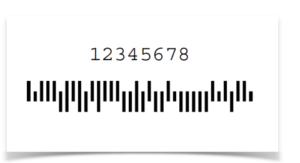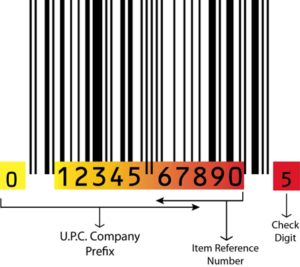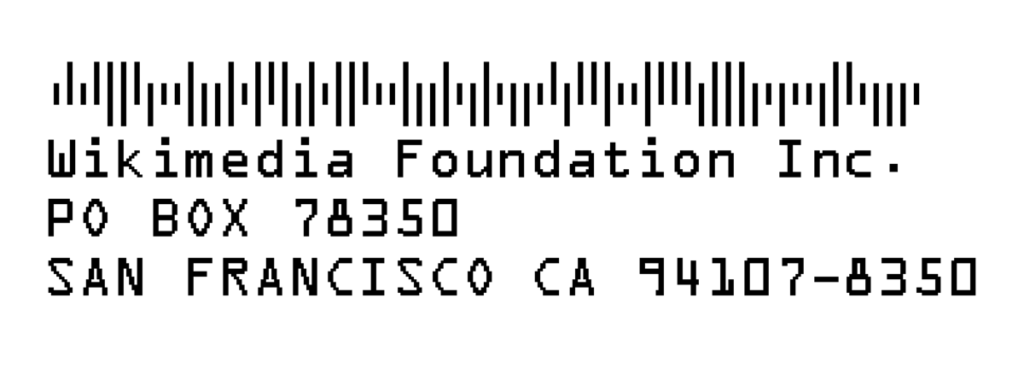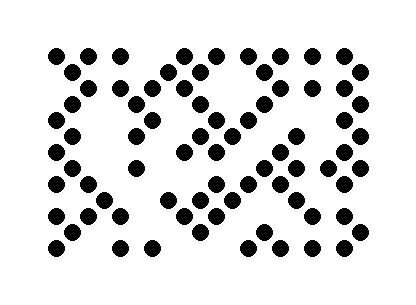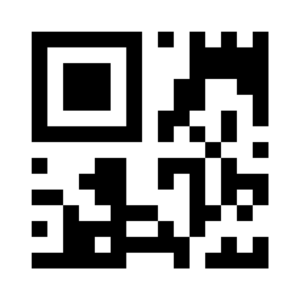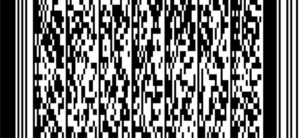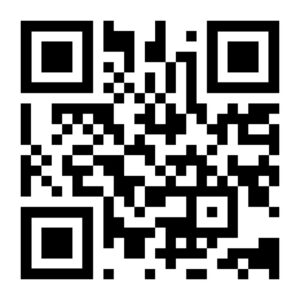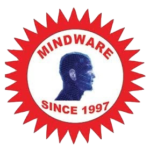 MINDWARE
MINDWARE
(Technology with Human Touch)
(INDIAN BARCODE CORPORATION)
Contents : –
-
What is Barcode?
-
Who invented?When invented?
-
Why invented?
-
Types of Barcode:- What is 1D or 2D Barcode?– Symbologies of Barcodes
-
Uses of Barcodes–
-
How Barcodes work?
-
How Barcode is made?
-
What are the Advantages of Barcode?
-
Barcode Technologies
-
How to get a Barcode?
-
Barcode Registration
-
What is RFID? – How it works?
-
Types of RFID& Uses of RFID
-
RFID Chips –
-
Design for RFID
(1) What is BARCODE?
MINDWARE– Addres: S-4, Plot -7, Pocket-7, Pankaj Plaza, near metro station, Dwarka sector-12, New Delhi, Delhi 110078
Contact MINDWARE – +91 9810822688
website – www.indianbarcode.come-mail: gm@indianbarcode.com
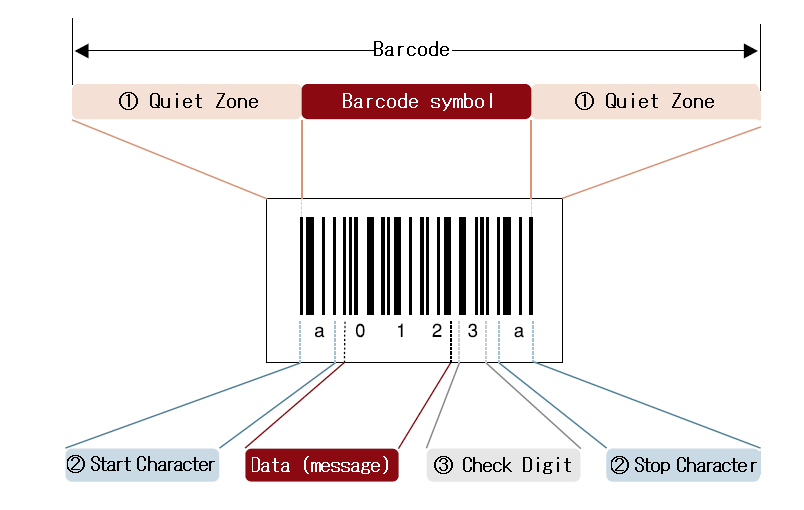
A Barcode is actually a readable-machine codes in the form of numbers and a pattern of parallel lines of varying width, printed on a commodity.A printed series of parallel bars or lines of varying width that is used for entering data into a computer system is called Barcodes. The bars are typically black on a white background, and their width and quantity vary according to application. The bars are used to represent the binary digits 0 and 1, sequences of which in turn can represent numbers from 0 to 9 and be processed by a digital computer. The presence or absence of a bar of a particular width in a particular position in a sequence is read by the computer as either a 0 or 1. Most such codes use bars of only two different widths (thick and thin), though some codes employ four widths. The numbers represented by a Barcode are also printed out at its base.
Hence a barcode essentially is a way to encode information in a visual pattern that a machine can read. The combination of black and white bars (which is called elements) represents different text characters which follows a set of algorithm for that particular barcode. It contains information about a product like; price & weight of the product, date of manufacturing and expiry, name of the manufacturer etc.
Who Invented Barcodes and when?
The barcode was invented by Norman Joseph Woodland and Bernard Silver and named in the US in 1951. The invention was based on Morse code that was extended to thin and thick bars. However, it took over twenty years before this invention became commercially successful. An early use of one type of barcode in an industrial context was sponsored by the Association of American Railroads in the late 1960s.Barcoding was actually introduced in the 1970s and is now everywhere and a important part of routine commercial transactions.
Why invented?
In 1948, Bernard Silver, a fellow Drexel Institute graduate student with Woodland, overheard a supermarket executive asking the dean of engineering if the Institute could determine how to capture product information automatically at checkout. The dean turned down the request, but Silver was interested enough to mention the problem to Woodland. After working on some preliminary ideas, Woodland was persuaded that they could create a viable product.
Woodland took some stock market earnings, quit his teaching job and moved to his grandfather’s Florida apartment. While at the beach, Woodland again considered the problem, recalling, from his Boy Scout training, how Morse code dots and dashes are used to send information electronically. He drew dots and dashes in the sand similar to the shapes used in Morse code. After pulling them downward with his fingers, producing thin lines resulting from the dots and thick lines from the dashes, he came up with the concept of a two-dimensional, linear Morse code.
History of Barcodes : –
Norman Joseph Woodland and Bernard Silver came up with the idea for barcodes based on the symbols in Morse code. The two recent graduates of Drexel Institute of Technology, (now Drexel University), applied for a patent for the invention in 1949 and received it three years later. Woodland sought the help of his employer, IBM, in building this technology, but IBM felt technological limitations in force at that time would prevent barcodes from catching on.The founders sold the patent to electronics company Philco in 1962, and Philco later sold it to RCA.
The railroad industry was one of the first to experiment with barcodes in the early 1960s, with a project spearheaded by David Jarrett Collins of electronics company Sylvania. To monitor the movement of railcars, Collins created a colorful barcode that was placed on the side of cars and scanned by a device next to the railroad tracks. Though this was an important first step, the system had some issues, and the Association of American Railroads gave up on it in the late ‘1970s. Another early adopter was General Motors, which used barcodes to track transmissions as they moved around a factory.
Types of Barcodes
As noted earlier, there are two basic types of barcodes. 1} Linear/1D& 2} Matrix/2D
Here are the basics on each and key differences:
Linear/1D

Linear, or 1D, barcodes are what most people visualize when they picture a barcode—black vertical bars with numbers below them. This is what most stores put on their products. Linear barcodes contain numbers, letters and symbols, which tie the code to a set of information in a database with details like product name, type, size and color. This Linear/1D barcodes are often used on consumer goods, loyalty cards, shipping labels and books etc.
Some of the 1D Barcode Symbologies are as Follows:-
Codabar

Codabar is a linear barcode symbology developed in 1972 by Pitney Bowes Corp. Its variants are also known as Codeabar, Ames Code, NW-7, Monarch, Code 2 of 7, Rationalized Codabar, ANSI/AIM BC3-1995 or USD-4. Although Codabar has not been registered for US federal trademark status, its hyphenated variant Code-a-bar is a registered trademark.
Codabar was designed to be accurately read even when printed on dot-matrix printers for multi-part forms such as FedEx air bills and blood bank forms, where variants are still in use as of 2007.
- Characteristics of Codabar:-
- This Symbology is used by U.S. blood banks, photo Labs, Librabries, and on FedEx air bills.
- Encodes numbers and the characters –$:/.+
- First and last symbols ( the guard patterns) are one of A, B, C, or D. They are returned as part of the String.
- Supports variable length data content.
- Some standards that use Codabarwill define a check digit, but there is no agreed-upon standard checksum algorithm.
- The width ratio between narrow and wide can be chosen between 1:2.25 and 1:3.
Code 11–

Code 11 is a barcode symbology developed by Intermec in 1977. It is used primarily in telecommunications. The symbol can encode any length string consisting of the digits 0–9 and the dash character (-). A twelfth code represents the start/stop character, commonly printed as “*”.
Characteristics:-
- Primarily used for labelingtelecommunication equipment. It is also known as USD-8
- The Barcode data can be encode numerical data, the dash and dot character.
- Supports variable length data content.
- For up to 10 data digits a single check digit is used, otherwise two check digits are used.
v Code 128

Code 128 was invented in 1981 by Ted Williams of Laser light Corporation to solve the problem of representing both alphabetic and numeric characters without sacrificing barcode density. Code 128 enables you to encode all 128 ASCII characters, as Code 39 – Full ASCII does. Additionally, when you encode only numbers, Code 128 can encode them more densely than Interleaved 2 of 5 does.
The most common use of Code 128 is for certain shipping labels, primarily as defined by GS1 in the GS1-128 barcode standard.
- Characteristics:-
- Used in a wide range of application.
- The Barcode data can be encode numerical data only or two different subsets of the ASCII table. Combinations of the three different modes can be used in single codes.
- Supports variable length data content.
- A mandatory checksum is verified.
- It has been standardized under ISO/IEC 15417.
Code 32 Italian Pharmacode

Code 32, also known as Italian PHARMACODE, is used to identify pharmaceutical products in Italy. It encodes numeric data in a compressed format by using the Code 39 – Regular character set.
Code 32 is partially defined in the Specifiche PHARMACODE (o CODE32) document.
- Characteristics:-
- It encodes numeric data in a compressed format by using the Code 39- Regular character set.
- The symbol compromises the following elements.
- Eight symbol character that represent numeric digits
- Check digits
- If fewer than eight Characters are specified, padding characters are added.
- Code 32 uses five bars and four spaces to encode each character. Three of the elements are wide, and other six are narrow.
- This symbology supports the following alphanumeric characters:
All numeric digits (0-9)
All uppercase letters except for A, R, I, and O
- The code 32 human readable interpretation begins with the ASCII character “A”. This character is not encoded into the the Barcode.
- Code 32 uses a check digit that is based on the module 10 (mod 10) algorithm.
Code 39–
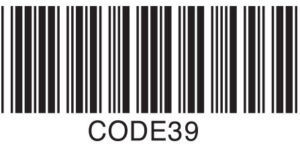
Code 39 was developed by Dr. David Allais and Ray Stevens of Intermec in 1974. Their original design included two wide bars and one wide space in each character, resulting in 40 possible characters. Setting aside one of these characters as a start and stop pattern left 39 characters, which was the origin of the name Code 39. Four punctuation characters were later added, using no wide bars and three wide spaces, expanding the character set to 43 characters. Code 39 was later standardized as ANSI MH 10.8 M-1983 and MIL-STD-1189. MIL-STD-1189 has been cancelled and replaced by ANSI/AIM BC1/1995, Uniform Symbology Specification — Code 39.
- Characteristics:-
- Mostly used in logistics to encode application specific identifiers.
- The standard version can encode numbers 0-9, capital letters A-Z, symbols -.$/+% and space.
- Supports variable length data content.
- Narrow to wide bars ratios from 1:2 up to 1:3 are supported. 1:2.5 is recommended.
- By default no checksum is verified.
- It has been standardized under ISO/IEC 16388.
- SDK Features:
- An optional mod43 checksum can be enforced.
- All ASCII characters including control characters encoding support can be enabled.
Code-93–
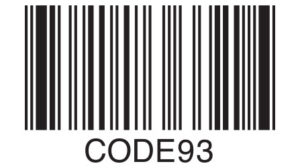
Code 93 is a barcode symbology designed in 1982 by Intermec to provide a higher density and data security enhancement to Code 39. It is an alphanumeric, variable length symbology. Code 93 is used primarily by Canada Post to encode supplementary delivery information. Every symbol includes two check characters.
- Characteristics:
- Mostly used in logistics to encode application specific identifiers.
- Data in standard encoding (numbers 0-9, capital letters A-Z, symbols -.$/+% and space) and full ASCII mode (including control characters) are supported.
- Supports variable length data content.
- Two mod47 checksums are verified.
EAN Code–
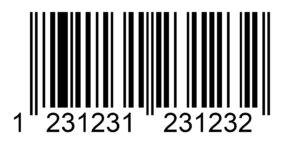
EAN stands for ‘European Article Number’. It was introduced by the predecessor institution of today’s GS1 with the aim of providing all European products with individual article numbers. In 2009 the EAN was replaced by the 13-digit Global Trade Item Number (GTIN). It is important to clearly label articles and article variations to ensure traceability and to simplify or automate production management through the entire supply chain until the point of sale.
- Characteristics:
- Used to encode Global Trade Identification Numbers (GTIN).
- Contains 8 (EAN-8) or 13 (EAN-13) numerical digits.
- Last digit serves as a mod10 checksum.
- Additional data can be stored in an EAN-2 or EAN-5 add-on code.
- It has been standardised under ISO/IEC 15420.
GS1 Data Bar
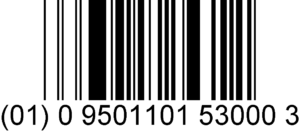
GS1 Data Bar (formerly known as RSS or Reduced Space Symbology) is a relatively new bar code symbology that was formally adopted by the global supply chain in January 2011. The GS1 Data Bar can carry all 14 digits of a manufacture’s GTIN and is more than 50% smaller than the currently used UPC and EAN symbols. This makes it particularly useful for identifying small/hard-to-mark items such as produce and pharmaceutical items. Additionally, the GS1 Data Bar symbol can carry GS1 Application
KEY POINTS:
- Databar Barcode symbols can encode all 14 digits of a GTIN-14 where UPC & EAN cannot.
- The Databar symbol is over 50% smaller than EAN/UPC so it can be used for smaller or hard to mark items.
- Databar bar codes are not going to replace EAN/UPC symbols. Product manufacturers can decide the language they wish to use based on package design.
- Databar symbols and GS1 Application Identifiers will be available in all trade item scanning systems beginning January 1, 2010. At that time, retail POS scanners should be able to autodiscriminate between the various GS1 barcode languages.
- Adoption of the Databar symbology is critical to address the revised coupon coding requirements.
Characteristics–
- Used to encode a Global Trade Identification Numbers (GTIN) along with variable additional information defined by application identifiers (AI). Examples are price, weight or expiry date.
- Valid application identifiers (AI) are defined in the GS1 specification.
- Supports variable length data content.
- Barcode data is verified by an implicit checksum.
- Does not require quiet zones around the barcode.
- It has been standardized under ISO/IEC 24724.
- DataBar-14 is supported in the omnidirectional, truncated and stacked flavour.
- DataBar Expanded is supported in the normal and stacked flavour.
- DataBar Limited is supported which is also known as RSS Limited, Reduced Space Symbology Limited.
IATA 2 of 5 Bar Code–

The IATA (International Air Transport Association) 2 of 5 barcode is a self-checking, numeric 1D barcode that is commonly used by the airline industry. This barcode is a variation of Industry 2 of 5 and employs a checksum for error detection.
Characteristics:
- Also known as Computer Identics 2 of 5.
- Used by International Air Transport Association (IATA) for managing air cargo.
- Supports variable length data content.
- By default no checksum is verified.
- An optional mod1010 checksum can be enforced.
Interleaved 2 OF 5 (ITF):
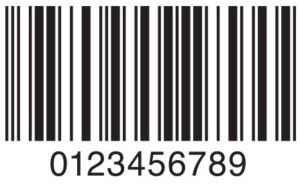
Interleaved 2 of 5 (ITF) is a numeric only barcode used to encode pairs of numbers into a self-checking, high-density barcode format. In this symbology, every two digits are interleaved with each other to create a single symbol. If a number string containing an odd number of digits needs to be encoded, a leading zero must be added to produce an even number of digits in the Interleaved 2 of 5 barcode. In many cases, the Code 128 barcode offers an advantage over the ITF barcode because it encodes even and odd numbers of digits, as well as letters and symbols, with nearly equal density.
Characteristics:
- It is used primarily in the distribution and warehouse industry.
- Encodes an even number of numerical characters.
- Supports variable length data content.
- Narrow to wide bar ratios from 1:2 up to 1:3 are supported. 1:2.5 is recommended.
- By default no checksum is verified.
- It has been standardized under ISO/IEC 16390.
- An optional mod10 checksum can be enforced
KIX (KlantIndex) Barcode
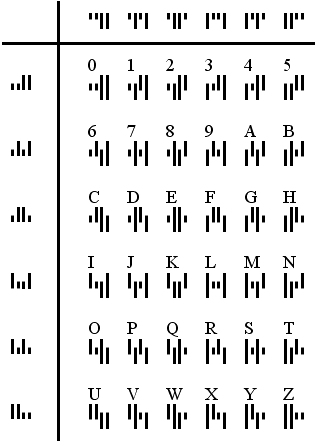
The KlantIndeX (KIX) 4-State Customer Code is used by the Netherlands postal system for faster automatic processing of bulk mail and for other uses. It is a variant of the Royal Mail 4-State Customer Barcode (CBC); KIX has the same specifications for the data bars as CBC but lacks start and stop bars.
Characteristics:
- Used for mail sorting by the postal service of the Netherlands, Koninklijke TNT Post (Royal TNT Post)
- Regarded as “four-state” because there are four types of bars, classified by presence of ascenders and/or descenders
- Transcribable using DAFT notation
- Used by a number of countries in their postal systems, though the specific symbologies by which they encode characters can vary
Encodes alphanumeric characters, and is a slight variant of the Royal Mail 4-State system, omitting the start and end symbols and checksum
Matrix 2 OF 5–
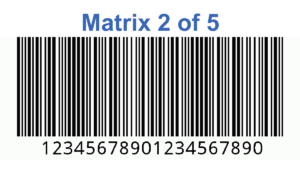
Matrix 2 of 5 (also known as Code 2 of 5 Matrix.[1]is a variable length, discrete, two width symbology. Matrix 2 of 5 is a subset of two-out-of-five codes. Unlike Industrial 2 of 5 code, Matrix 2 of 5 can encode data not only with black bars but with white spaces.
Matrix 2 of 5 was developed in 1970-х by Nieaf Co. in The Netherlands and commonly was uses for warehouse sorting, photo finishing, and airline ticket marking.
Matrix 2 of 5 can encode only digits 0-9. Matrix 2 of 5 can include optional check digit. Most of barcode readers support this symbology.
Maxicode –
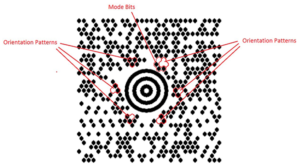
Maxi Code is a public domain, machine-readable symbol system originally created and used by United Parcel Service. Suitable for tracking and managing the shipment of packages, it resembles an Aztec Code or QR code, but uses dots arranged in a hexagonal grid instead of square grid. MaxiCode has been standardised under ISO/IEC 16023. A MaxiCode symbol (internally called “Bird’s Eye“, “Target“, “dense code“, or “UPS code“) appears as a 1-inch square, with a bullseye in the middle, surrounded by a pattern of hexagonal dots. It can store about 93 characters of information, and up to 8 MaxiCode symbols can be chained together to convey more data. The centered symmetrical bullseye is useful in automatic symbol location regardless of orientation, and it allows MaxiCode symbols to be scanned even on a package traveling rapidly.
MaxiCode symbology was released by UPS in 1992.
Characteristics–
- Fixed size 2D symbology originally created by UPS in 1992.
- Used for tracking and managing shipments of packages.
- It has been standardized underISO/IEC 16023.
- Supports encoding of a Structured Carrier Message or data in extended ASCII.
- Uses Reed-Solomon error correction.
MSI Plessey-

MSI Plessey (also known as Modified Plessey) is a numeric-only, variable-length symbology that is a variant of Plessey Code, which was originally developed by the Plessey Company of England in 1971.
MSI Data Corporation developed MSI Plessey to address the disadvantages of Plessey Code: it does not encode numbers efficiently, and it is one of the most error-prone of all barcode symbologies. The second check digit that MSI Data Corporation added as an option improved the code’s reliability enough that MSI Plessey has continued to be used in specialty applications.MSI Plessey has typically been used for inventory tracking, such as on the front edge of shelves in supermarkets and other warehouse environments to indicate where products are stored. It has also been used to identify storage containers.
MSI Plessey is currently maintained by Symbol Technologies, Inc.
Characteristics:
- MSI is used primarily for inventory control, marking storage containers and shelves in warehouse environments.
- Encodes any number of numerical characters.
- By default a mod10 checksum is verified.
- Verifying no checksum is supported as an option.
- Alternative supported checksum options are mod11, mod1010 and mod1110.
PosiLapa 4 State Code–
Characteristics–
- Uses the same symbol alphabet as RM4SCC.
- Uses Reed-Solomon error correction. It can correct up to 8 erasures or 4 errors.
- LAPA can be read from left-to-right or right-to-left. The direction can be determined by reading the leftmost or the rightmost bar.
Thanks to its fixed length and error correction, it offers better robustness than RM4SCC
RM4SCC
RM4SCC (Royal Mail 4-State Customer Code is the name of the barcode character set based on the Royal Mail 4-State Bar Code symbology created by Royal Mail. The RM4SCC is used for the Royal Mail Clean mail service. It enables UK postcodes as well as Delivery Point Suffixes (DPSs) to be easily read by a machine at high speed
Characteristics:
- Supports variable length data content.
- Data encoding modes support numeric, alphanumeric, binary data and kanji characters.
- Different sizes (called versions) and error correction levels can be defined.
- It has been standardised under ISO/IEC 18004.
- Color inverted decoding can be enabled.
- GS1 codes are identified to signal that application identifiers are present (GS1 QR).
UPC Code–
A UPC, short for universal product code, is a type of code printed on retail product packaging to aid in identifying a particular item. It consists of two parts – the machine-readable barcode, which is a series of unique black bars, and the unique 12-digit number beneath it.
The purpose of UPCs is to make it easy to identify product features, such as the brand name, item, size, and color, when an item is scanned at checkout. In fact, that’s why they were created in the first place – to speed up the checkout process at grocery stores. UPCs are also helpful in tracking inventory within a store or warehouse.
To obtain a UPC for use on a product a company has to first apply to become part of the system. GS1 US, the Global Standards Organization, formerly known as the Uniform Code Council, manages the assigning of UPCs within the US.
Characteristics:
- Used to encode Global Trade Identification Numbers (GTIN).
- Contains 6 (UPC-E) or 12 (UPC-A) numerical digits.
- Last digit serves as a mod10 checksum.
- Additional data can be stored in an EAN-2 or EAN-5 add-on code.
- It has been standardised under ISO/IEC 15420.
Feature–
- The first digit is always zero and can be removed on demand.
- UPC-E representation can be automatically converted to the UPC-A format.
USPS Intelligent Mail–
USPS Intelligent Mail barcode (IMb), also known as the USPS OneCode Solution or USPS 4-State Customer Code, was developed by the United States Postal Service (USPS) and is used for automated sorting of mail. It supersedes the USPS Postal Numeric Encoding Technique (USPS POSTNET) and Postal Alpha Numeric Encoding Technique (USPS PLANET) codes and effectively encodes data from these symbologies into a single symbol in addition to providing enhanced tracking data
Characteristics:
- Used by U.S. Postal Service (USPS) mailstream
- Designed to sort and track mail deliveries, containing routing and tracking information
- Combines and improves functionalities of POSTNET and PLANET Code barcodes
- Allows providing multiple postal services with a single barcode
USPS Intelligent Mail barcode is height-modulated and it encodes up to 31 digits of mailpiece data. It consists of 65 vertical bars using a 4-state symbology (four types of bars, which are allowing for more information to be encoded in a single barcode).
Matrix/2D
2D barcodes are also known as Matrix Barcodes. This 2D barcodes can store additional information, including quantity, images and website URLs. A 2D barcode can render this information without any connection to a database. Common uses of 2D barcodes are QR codes, which may direct users to a specific website or act as digital boarding passes. They have also become increasingly common in high-value manufacturing environments that require detailed tracking of parts and products, like medical equipment and pharmaceuticals.
Some of the 2D Barcode Symbologies are as Follows:-
Aztec Code
Aztec Code is a type of 2D barcode invented by Andrew Longacre, Jr. and Robert Hussey in 1995. The code was published by AIM, Inc. in 1997. Although the Aztec Code was patented that patent was officially made public domain. The Aztec Code is also published as ISO/IEC 24778:2008 standard. Named after the resemblance of the central finder pattern to an Aztec pyramid, Aztec Code has the potential to use less space than other matrix barcodes because it does not require a surrounding blank “quiet zone”.
Characteristics of Aztec Code :
- Used for Tickets in the transport industries, eg. Railway companies.
- Data can be encoded in ASCII or extended SCII.
- Supports variable length data content.
- Different error Correction Levels can be defined.
- It has been Standardlized under ISO/IEC 24778
Data Matrix–
Data Matrix is a type of 2-D barcode with very high data density and can encode a large amount of data. Data Matrix consists of a random sequence of black and white pairs. Data matrix code type can encode the text, as well as raw data. The range of the data encoded by the Data matrix usually lies between a few bytes up to 2 kilobytes. With this data storage space, approximately 2,335 alphanumeric characters can be encoded by a data matrix symbol. Data Matrix coding standard is widely used in Europe and the United States for information encoding.
ID Matrix is credited as being the inventor of the Data Matrix barcode around 2005.
Characteristics
- Supports variable length data content.
- Encodings and sizes defined in the Data Matrix ECC 200 standard are supported.
- Different error correction levels can be defined.
- It has been standardized under ISO/IEC 16022.
- Features–
- Color inverted decoding can be enabled.
- GS1 codes are identified to signal that application identifiers are present (GS1 DataMatrix).
Dot code–
The DotCode is 2D barcode which encodes data in dots in a rectangular array. It was originally developed as a solution for a machine-readable code that could be read reliably when printed using high-speed inkjet or laser technologies.
In industries with high-speed production processes, DotCodes can be used as an alternative to other 2D codes to facilitate item-level serialization allowing products to be tracked throughout global supply chains.
The DotCode was developed by Dr Andrew Longacre, with official specifications published by global industry standards organization AIM in 2009.
Characteristics:
- Designed to tolerate missing, extra or poorly-placed dots without sacrificing reading integrity.
- The symbology is intended for industrial, high-speed marking with ink-jet or laser.
- This variable size, dot matrix symbology encodes data in an array of nominally disconnected dots arranged within a regular grid of possible locations.
- The overall symbol shape is adjustable, rectangular to nearly square shaped symbols are possible.
- The symbol size is theoretically unlimited but practically limited to approximately 124 modules (lines/columns).
- Standard code page is Latin 1.
Ready for GS1 applications and suitable for encoding application identifiers (AIs).
GS1 Composite Code–
As the name suggests, the GS1 Composite code symbology combines a GS1 system linear symbol and a 2D Composite Component as one symbology. While the two components are separated by a separator pattern, the 2-dimensional component is printed above the linear component.
Characteristics:
Composite codes are combinations of a linear (1D) barcode and a 2D code. The linear component encodes the item’s primary identification. The 2D component describes additional data like a batch number or expiration date. The Scandit SDK version 4.14 or newer supports all GS1 Composite Codes as defined in ISO/IEC 24723:2010. The specification defines three different types; A, B and C. The linear component of a composite A or B code can be any of the following symbologies:
- EAN/UPC symbology (EAN-13, EAN-8, UPC-A, or UPC-E)
- GS1-128 (Code 128)
- Any member of the GS1 Data Bar family.
Micro QR Code–
Micro QR Code was designed by Denso Wave in Japan to be a smaller, more compact version of their regular QR Code. Micro QR is intended for use where QR Code would take up too much space or where less data needs to be encoded, as with direct parts marking on small components. It also encodes kanji characters.
Micro QR Code can be printed in black on a white background or in white on a black background.
Micro QR codes take up much less space than traditional QR codes. They can only handle 35 characters but you can easily fit them on your business card, website or a small product tag.Standards: ISO/IEC 18004, JIS X 0510, ITS – QR Code, AIM ISS – QR Code.
Data & Options–
- The data field can contain any extended ASCII data. The default interpretation of data by readers is in accordance with ISO/IEC 8859-1.
- An appropriate size will be selected to work around the following restrictions:
- An M1 symbol is only compatible with numeric data.
- An M2 symbol is only compatible with alphanumeric data.
- When the Parseoption is specified, any instances of ^NNN in the data field are replaced with their equivalent ASCII value, useful for specifying unprintable characters.
- The versionoption is used to specify the size of the symbol, either version=M1, version=M2, version=M3 or version=M4.
- Theecleveloption is used to specify the error correction level:
- eclevel=L – Low (default)
- eclevel=M – Medium; Not compatible with M1 symbols
- eclevel=Q – Quality; Only compatible with M4 symbols
- If unspecified the encoder will select the version of the symbol that is the minimum size to represent the given data at the selected error correction level.
Micro PDF 417 –
MicroPDF417 is a two-dimensional, variable-length stacked symbology that is designed to encode a moderate amount of data in a very small space. It is based on PDF417 and shares several of its features.
MicroPDF417 is two-dimensional (2D), multi-row symbology, derived from PDF417 that encodes up to 150 bytes. All of our MicroPDF417 products were created from ISO/IEC 24728. Micro-PDF417 is designed for applications requiring improved area efficiency, and is used for Composite Codes in GS1 DataBar
Characteristics:
- More space efficient version of PDF417 without start and end patterns.
- Used in GS1 Composite Codes type A (CC-A) and B (CC-B).
- Supports variable length data content using one to four columns and up to 44 rows.
- All size versions have a fixed error correction level.
- It has been standardised under ISO/IEC 24728.
PDF 417 –
PDF417 is used in many applications by both commercial and government organizations. PDF417 is one of the formats (along with Data Matrix) that can be used to print postage accepted by the United States Postal Service. PDF417 is also used by the airline industry’s Bar Coded Boarding Pass (BCBP) standard as the 2D bar code symbolism for paper boarding passes. PDF417 is the standard selected by the Department of Homeland Security as the machine readable zone technology for RealID compliant driver licenses and state issued identification cards. PDF417 barcodes are also included on visas and border crossing cards issued by the State of Israel.
- Characteristics:
- Used in a wide range of applications.
- Supports variable length data content.
- The number of rows and Coloumns are Configurable.
- Different error correction levels can be defined.
- It has been standardized under ISO/IEC 15438.
- Truncated PDF417 codes are supported.
QR Code
A QR code (an initialism for quick response code) is a type of matrix barcode (or two-dimensional barcode) invented in 1994 by the Japanese automotive company Denso Wave. QR codes often contain data for a locator, identifier, or tracker that points to a website or application. A QR code uses four standardized encoding modes (numeric, alphanumeric, byte/binary, and kanji) to store data efficiently; extensions may also be used.
